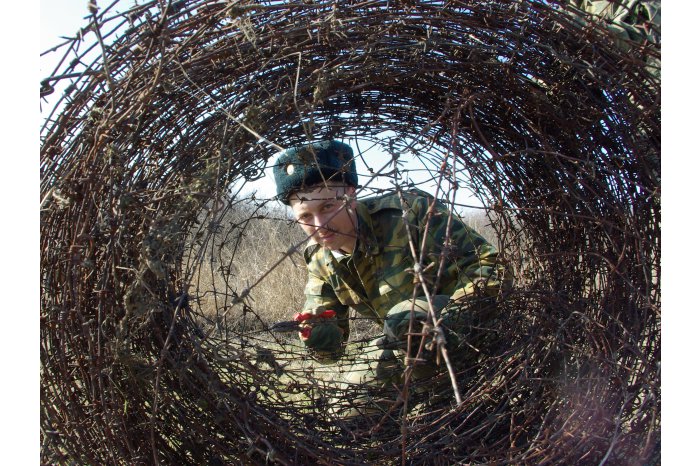10 February 2010. Disassembling of barbed wire along Prut river started in Moldova
11:20 | 04.02.2021 Category:
The barbed wire fence between Romania and Moldova was disassembled as late as two decades after the proclamation of the country’s Independence. Practically, the procedure of disassembling of the shameful fence started on 10 February 2010 and ended in March of the same year. There were more reasons for this unnatural delay of the barbed wire’s disassembling.
The spectacular events from 1989-1991 resulted in geopolitical reconfigurings, defeat of totalitarian ideologies and appearance of a large number of new states. The Berlin Wall fell, which was the most shameful segment of the Iron Curtain; the borders between the western countries and those which were members of the Socialist camp became transparent. The class hatred, xenophobia, inventing of external enemies – all these seemed to have been irreversibly gone into history.
In Moldova, a false feeling, cultivated during 200 years, was preserved. Romania, both before 1990, and afterwards, remained a scarecrow, meanly used by the politicians unable to edify civilized concepts and programmes.
The coming to power of a pro-European coalition in 2009 meant that slow, yet sure changes took place in the Moldovans’ mentality. According to expectations, on 9 January 2010, the government issued a decision, thereby demanding that the Border Guards Service and, if case may be, jointly with local public administration authorities, ‘’ensures the carrying out of the actions of removing the barbed wire fence from Moldova’s border with Romania.’’
Under the document, the volume of work and the forces due to be involved in the carrying out of the removal works were to be established till late January and the special services were to fulfill the programme in February-March.
The works were strictly coordinated with the Romanian side and, with the support of local public authorities, the Border Guards Service ended the works planned in term, i.e. in the first half of March.
There are 11 districts at Moldova’s border with Romania and the barbed wire was taken away at the frontier in ten districts. It has been taken out earlier in the Cahul district. As many as 360 km of barbed wire were taken away in all. Many enthusiastic people preserve parts of this barbed wire at present too, being convinced that their symbolic and sentimental value will be enhanced as time passes.
Many settlements from both banks of Prut organized holiday events on the occasion of the barbed wire’s disassembling. People were given possibility to use the fertile pastures from Prut river, while the others had much more direct access to farmlands. Meanwhile, the treaty on the small border traffic entered into force, which sped up the relations on both banks of Prut.
More political commentators set forth their opinions on this event. Most of them welcomed the removal of this vestige of the ‘’cold war’’ and described the action as an important step in Moldova’s Europenization. There were people who said that this event was a purely technical one and lacking symbolism. Unfortunately, there are also people who continue to believe that the barbed wire fence should have been preserved.
The European media commented positively, as well as with obvious surprise on the fact that the barbed wire fence was preserved between two countries with common language, history and traditions till as late as 2010.
During those 30 years of independence, more important events occurred in Moldova; some of them put a strong imprint on our fate. The disassembling of the barbed wire, besides other meanings, also proves that the clichés of the Soviet propaganda gradually disappear from the collective mentality. The barbed wire along the Prut river, which was passing through our conscience and soul, went into history and this fact is a sure symptom of our collecting recovery.
Chisinau, 1 February /MOLDPRES/.

